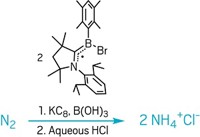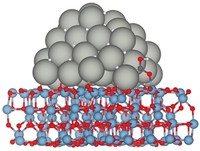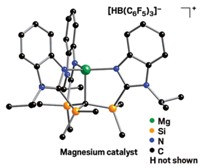Advertisement
Grab your lab coat. Let's get started
Welcome!
Welcome!
Create an account below to get 6 C&EN articles per month, receive newsletters and more - all free.
It seems this is your first time logging in online. Please enter the following information to continue.
As an ACS member you automatically get access to this site. All we need is few more details to create your reading experience.
Not you? Sign in with a different account.
Not you? Sign in with a different account.
ERROR 1
ERROR 1
ERROR 2
ERROR 2
ERROR 2
ERROR 2
ERROR 2
Password and Confirm password must match.
If you have an ACS member number, please enter it here so we can link this account to your membership. (optional)
ERROR 2
ACS values your privacy. By submitting your information, you are gaining access to C&EN and subscribing to our weekly newsletter. We use the information you provide to make your reading experience better, and we will never sell your data to third party members.
Synthesis
Vanadium Complex Shreds Nitrous Oxide
In a chemical first, metal cleaves both the N–O and the N–N bonds of nitrous oxide
by Stephen K. Ritter
January 30, 2012
| A version of this story appeared in
Volume 90, Issue 5
Metal-induced bond cleavage of nitrous oxide (N2O) typically proceeds by rupture of the N–O bond, leaving the oxygen atom bound to the metal and giving off N2 gas as a by-product. On rare occasions, N–N bond cleavage happens instead. A team led by Kay Severin at the Swiss Federal Institute of Technology, Lausanne, now reports a reaction sequence that results in cleavage of both the N–O and N–N bonds (J. Am. Chem. Soc., DOI: 10.1021/ja210976a). The team used a pair of complementary reagents to accomplish the feat: a vanadium mesityl complex with a strong affinity for oxygen and the strong Lewis basic N-heterocyclic carbene 1,3-dimesitylimidazol-2-ylidene, which weakens the N–N bond. Nitrous oxide is an efficient greenhouse gas, and under the right conditions in the atmosphere it’s an ozone-depleting substance. Severin’s team is studying N2O cleavage to learn how to overcome its inert character, which could lead to environmental remediation strategies or the ability to use N2O as a chemical reagent.






Join the conversation
Contact the reporter
Submit a Letter to the Editor for publication
Engage with us on Twitter